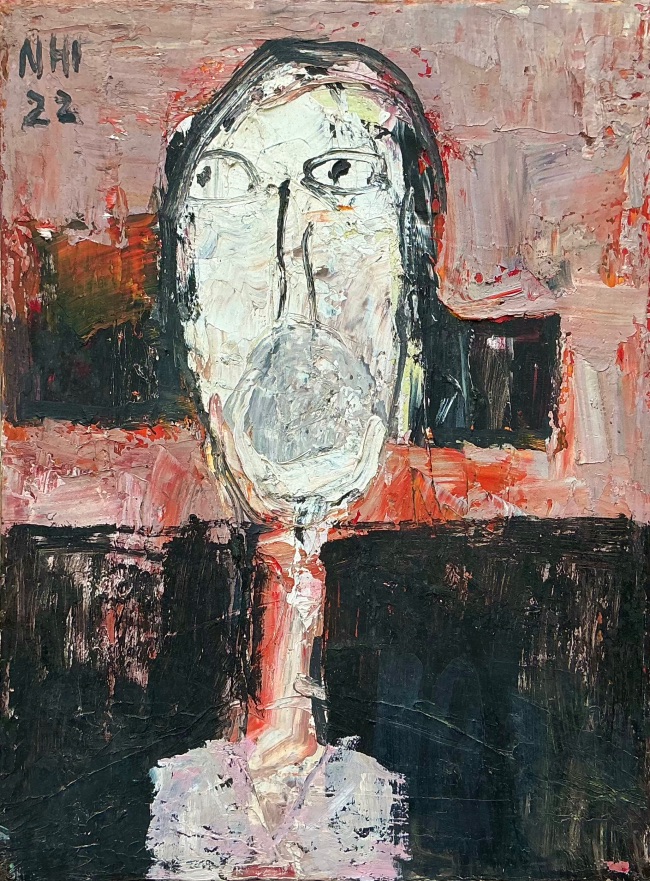Dinh Y Nhi: Oil Painting as the Backbone of a Quiet Artistic Journey
Dinh Y Nhi artist (born 1967, Hanoi) is one of the most prominent figures of contemporary Vietnamese art, recognized for her ability to convey inner states through a disciplined and minimalist use of oil paint. Graduating from the Hanoi University of Fine Arts in 1989, she quickly established her reputation with a series of two-tone paintings (black-white, red-black) that made her name both at home and abroad.
Oil Painting – Technique and Style
Oil paint has always been the central medium in Dinh Y Nhi’s practice. Unlike many artists who prefer expressive or exuberant brushwork, she approaches the material with restraint: a limited palette, decisive strokes, and flat yet dense surfaces. Her canvases are not merely representations of form but atmospheres of psychology. Figures are stripped down to essentials, their silhouettes simplified, leaving color, tone, and surface to express solitude, introspection, or subtle tension.
What distinguishes her oil technique is the interplay between flatness and emotional depth. By limiting herself to a restricted palette, she creates a symbolic visual language: red embodies passion and unease, black evokes obsession, while white provides breathing space. Her disciplined approach lends her oil paintings both clarity and intensity, setting them apart in the context of Vietnamese art in the 1990s.
During this early period, her dual-color works focused on structural contrasts—light versus shadow, presence versus void—allowing the texture and layers of oil paint to carry emotional resonance. Later, she broadened her color range and experimented with other mediums such as dó paper, but oil remained her backbone, a medium through which she continued to refine composition, atmosphere, and emotional charge.
Works in Major Museums
Dinh Y Nhi’s paintings are not only sought after by collectors but also preserved in significant institutional collections. Among them:
Vietnam Fine Arts Museum (Hanoi), which houses representative oil paintings from her early career.
National Art Gallery of Malaysia (Balai Seni Negara), where her works form part of the official collection of Southeast Asian art.
Singapore Art Museum, which also includes her paintings in its holdings.
The presence of her oil paintings in these museums highlights not only her importance within Vietnam but also her recognition across Asia. In particular, situates her within a broader regional narrative of contemporary Southeast Asian art, confirming both the scholarly and cultural value of her practice.
Conclusion
Dinh Y Nhi has pursued a quiet yet persistent path, deliberately avoiding the lure of trends or superficial labels. She does not frame herself as a “female painter” but as an artist devoted to refining a singular language. Oil paint has been her foundation—its layered textures, tonal depth, and capacity for restraint making it the perfect vehicle for her art.
Her works, now preserved in national museums in Vietnam, Malaysia, and Singapore, stand as testimony that true artistic value lies not in noise but in depth. Through oil painting, Dinh Y Nhi offers not just images, but silent spaces where viewers confront their own inner worlds.

